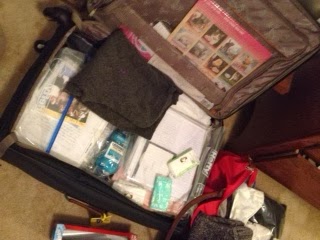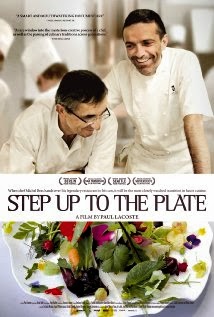

I often think about the fact that when it comes to my work I do not really live in the "real world." That point is certainly driven home when I come here to France and visit with the students at Le Mourion, a public middle school, serving about 950 students with about 60 teachers. In France, cities and towns provide elementary schools for children. Middle schools begin in the equivalent of our 6th grade and end in 9th grade. The département (kind of like our counties) take care of them. High schools are supervised by the régions. Students begin to specialize in high school and take a series of tests called le baccalauréat at the end of their last year. Some of the tests actually take place in the 11th grade. If a student is successful on the bac, they have the right to go on to university. All of their education is provided by the state, including university.
English is studied by practically everyone, beginning in 6th grade. This week, I've attended probably 10 different classes at all three grade levels. The students in the Euro section are the ones who will host my students in March and who will come to visit us in April. The students chosen for this two-year class have two extra hours of English per week. They are hand-picked for this class.
All of the students are eager to ask me lots of questions about life in the U.S. and what my school is like. I worry that they will think that all American schools are like mine. Au contraire. I try to make the point that DA is an independent, non-religious school. Private Catholic schools exist in France, but they must follow the national curriculum and parents pay according to their income. There is religious instruction. I used to have an exchange with a Catholic middle school north of Paris. I know that my school is very special. The buildings at the middle school may not be brand new or flashy, but what goes on in our classrooms is. We choose our own materials and we are given quite a bit of freedom when it comes to what we teach and how we teach it. We are supported by grants and professional development money that allow us to attend workshops, classes, conferences, and for me to spend a week here with my friend planning this year's exchange-- meeting the students and the parents. Our middle school has a one-to-one iPad program. Yes, each student has an iPad and we use them to teach. It belongs to the school and parents pay insurance. We have over 45 different athletic teams. Running the program keeps the Ex-Ex very busy! He doesn't get to go to France in January and March. We are rarely told no when we have an idea that would enhance our students' learning. It is expensive to attend my school. As one student here in France said yesterday after learning how much it costs to attend DA, "You could buy a very nice house for the cost of going to your school for 10 years!" She said it in French, of course, because she didn't wait to try to find the English for that. It just popped out of her mouth.
I sat in on a meeting today of the middle school English teachers. If I got it all straight, the administration is considering dropping a part-time post and/or cancelling one section of 6th grade and one of 8th grade. (The classes are divided into sections of around 28 students each and they all travel together to their classes during the day. There are between 7-9 sections per grade level.) This means that the teachers would have to take on more hours per week and/or have larger classes. In France, a full-time teacher is expected to teach 18 hours per week and spend at least one hour working outside of class, equaling 36 hours per week. A full-time work week in France is 35 hours. The schools do hire what they call surveillants or supervisors to cover study hall, lunch and break duties. Somedays a teacher might have seven hours of class and on another only four. Or none at all. Wednesday is a halfday for everyone. The school day lasts from 8:00 am to 5:00 pm. Being French, they have a longer lunch time- at least an hour. No gobbling down their lunch in 20 minutes or less. Even middle school students think that is horrible (gasps all around when I tell them that).
I didn't really know much about independent schools until I applied for a job at Durham Academy during my senior year in college. One of my education professors assigned an article written by a teacher in a private school. That article stuck with me because the teacher seemed to feel an enormous amount of guilt about teaching in a priviledged environment. I am the product of public education, including college, where I paid my own way with the help of scholarships. I wanted to teach, I wanted to teach French and I wanted to teach middle schoolers. And, luckily, Rob Hershey, the head of school in 1980, took a chance on me. I did feel quite a bit of guilt for quite a long time. Until I realized that my students need me. And I need them. I have little patience for complainers. Teachers at my school have no reason whatsoever to complain. Oh, everyone has a bad day once in a while, even me! But I hope that my colleagues and students realize just how lucky we are. When the French kids ask me if I like my job and if I like my students, I truthfully tell them that I love both.
Lesson over! Time for my apéritif and I must make sure that the cats do not mess with dinner!
Bon appétit to teachers everywhere!
PS-- Yes, I figured out how to post photos!! Thank you, BlogPress!
































